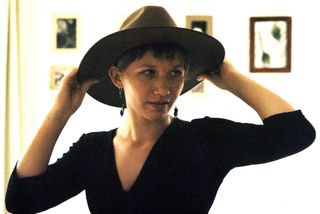Friday, August 26, 2011
Thursday, August 18, 2011
A new South African day
Cows in Nairobi
Friday, July 15, 2011
Bujumbura in a heartbeat
Monday, July 11, 2011
Monkey's Winter
Wednesday, June 22, 2011
Down tools and upload
Thursday, May 26, 2011
The Early Elephant
His birthday came early this year. I felt the loss, the grief, the day before the 26th of May.
In hindsight I always recognise the signs but never as they set in. Some years are worse than others. I’m always determined that I’m ok, that this elephant does not need to be dealt with. I always get out of bed and try to begin the day.
I walked down to work with in my head in stitches. I couldn’t feel the warmth of the sun nor could I smell the morning. My mouth was dry and my eyes saw only grey and drain water.
The little things that set me off are always so little. I find myself weeping, gently and continuously. I wipe the tears from my face as if they are not there until the great, tired emptiness engulfs me. Until I acknowledge that I need to completely stop, to take time to remember, to feel, to miss him, to be sad.
Being sad takes energy. You have to stop everything else and stare the sadness in the face. You cannot multi-task sadness, it waits for you and it is impatient.
I came home and slept and slept the afternoon away. When I woke up my cheeks ached and I felt old like an elephant but whole again.
He would have been 59 and would have hated it.
Friday, May 06, 2011
London, briefly
There was, however, a set of images not usually exhibited (a set the censor's knife had previously come down upon )- Goldblatt took a series of shots of bodies and, in this case, crotches of people seated on benches. The range was wonderful, from an old boere with that familiar bulge to the left, a Xhosa person in a blanket and hands carefully folded in his lap, two old women in little shorts and platform heels (thighs which are sagging and cellulite-d but still thin with a hand holding a cigarette on one knee), a demure woman in a skirt.
This was photography exhibit No. 1
No 2 was Figures and Fictions - Contemporary South African Photography
It was a collection of people who are big in SA photography today; Zanele Maholi, Pieter Hugo, Sabelo Mlangeni, Hasan & Husein Essop. All of them quite different and even in the limits of the tiny room there was so much to take in. This exhibition was much better curated, you came away with a stronger impression of the complexity of South African society and the multi-textual layers were really brought out (even within V&A text limits). Although, it might also be said that the new SA is allowed (indeed encouraged) to have more multi-textual layers than the old one was. It is, for example, quite interesting that photography in SA shifted to colour from black and white with the Transition.
Because there was so much more there, I am finding it so much more difficult to put it across here.
All photographied out, we then had a brief sojourn to this delightful little sun-filled bookshop-come-bar that stocks an eclectic collection of books that are an interesting find but not something you'd necessarily buy. For example: a collection of the blue plaques in London which tell you that a famous person lived here from this time to this time. We had an engrossing few minutes seeking Oscar Wilde's house, Captain Cook's, Evelyn Waugh's. Yet, in the end, did not buy it.
We met Si for dinner in Covent Garden and then crossed the Thames and fell upon the second hand book sellers on the Southbank before the National Theatre. We had tickets to see the Holy Rosenburgs at the National Theatre. It's about a Jewish family in Edgeware (West London) who's son has just died in Israel and who's daughter is a lawyer on a commission investigating human rights abuses in Gaza. The set is their living room and it was theatre-in-the-round. So you were a fly on the wall in a family conversation one evening as they prepared to sit shivas for their son and as their daughter returns home for the funeral. It is a deliberate echo on the current saga around the Jewish Community in South Africa and Goldstone (Ruth, the daughter, is being convinced not to attend the funeral because pro-Israel protesters will be there outside and will cause a scene).
